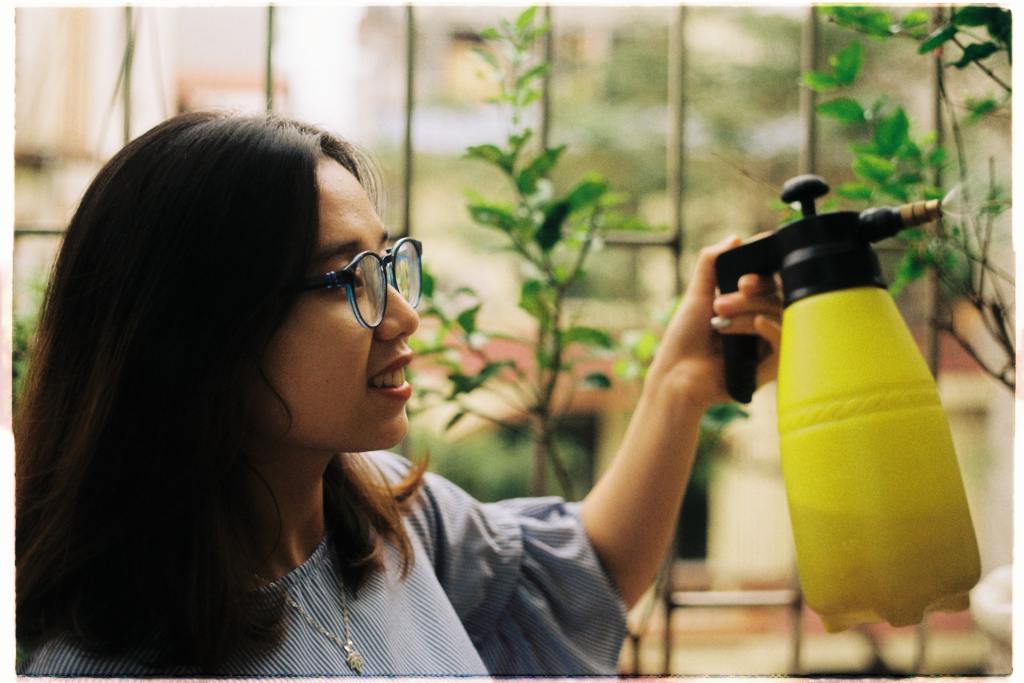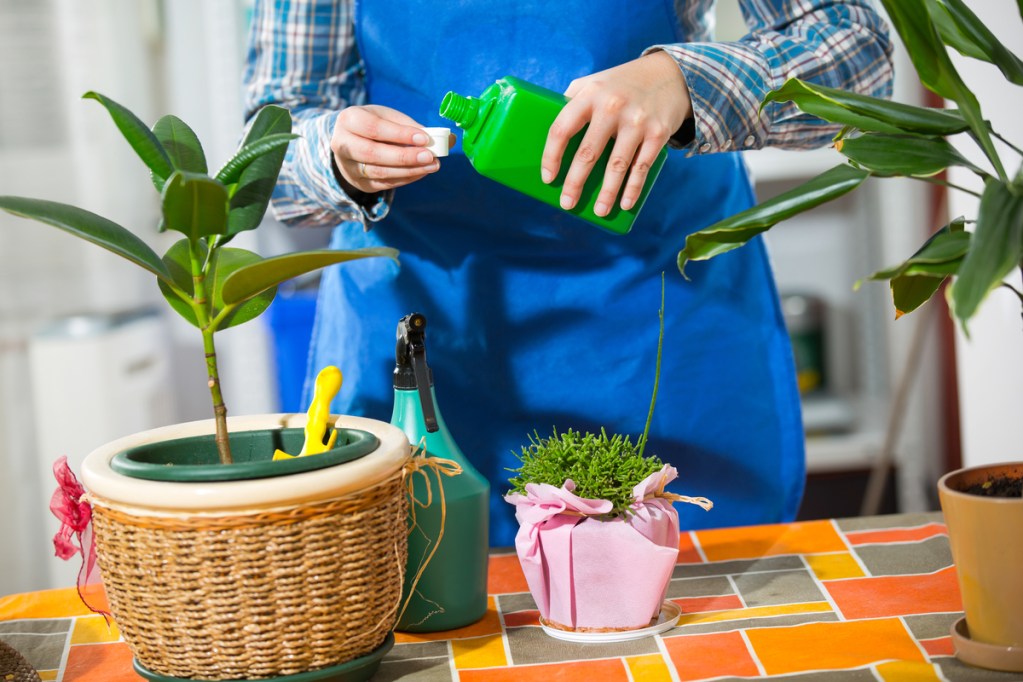Many people use fertilizers to make up for poor soil or give plants a boost right before blooming or fruiting. Some gardeners prefer to fertilize their plants on a set schedule, while others only fertilize when the plants need a boost. For outdoor gardens, the nutrients can be replenished in many ways, making fertilizing a bit easier.
Potting soil for indoor plants doesn’t get replenished as often, so you might wonder if they need a different amount of fertilizer or a different fertilizer schedule. How often should you fertilize indoor plants, and what kind of fertilizers do they need? We have answers.
How to know if your indoor plant needs fertilizing

Most indoor plants will benefit from regular or semi-regular fertilization. Plants get the majority of the nutrients they need from the soil, but the soil has to get those nutrients from somewhere, too. In the wild, soil gets nutrients from decaying plant matter, insects, and wildlife. Indoors, the soil has fewer fresh nutrients being added to it, which makes potted plants more likely to run out of nutrients.
Plants growing in a hydroponic garden setup will run into the same problem. The plants get their nutrients from the water, but if the water is a closed system with nothing new being added to it, the nutrients will run out eventually. The exception to this is air plants since the air in your home isn’t a closed system. However, it is still more limited than the air outdoors, so you may want to keep some liquid fertilizers on hand.
Some of the common signs of nutrient deficiencies are:
- Discolored leaves
- Stunted growth
- Delayed blooming
- Unusually small flowers
These symptoms can be caused by other things, such as pests and diseases. Once other options have been ruled out and you’re sure the cause is a nutrient deficiency, then you should fertilize your plants to course correct. In mild cases, the damage can be reversed, so it’s important to catch malnutrition early.
What factors affect fertilization timing?

Many factors contribute to how often you should fertilize indoor plants, but here are a few of the most important ones:
- Type and size of plant
- Type and amount of soil
- Season and climate
- Type of fertilizer
Different plants have different nutritional needs. Plants that are larger tend to have bigger flowers or fruits, or that naturally grow in nutritionally dense, rich soil, will need more frequent fertilization. On the other hand, plants that are smaller, or that naturally grow in poor or sandy soil, will need less frequent fertilization.
Dense soil holds onto nutrients more readily than loose, sandy soil. As such, denser soil needs less frequent fertilization, while looser soils need more frequent fertilization. In a similar vein, if there’s less soil in general, then your plant will deplete the nutrients more quickly, meaning you’ll need to fertilize it more often.
Season and climate are important factors for many, but not all, plants. Most plants go dormant during the winter. Since they aren’t growing, they don’t need fertilizer. However, if you live in a warmer climate or if your home is well heated, then this dormancy might be delayed or skipped entirely. Plants that bloom or fruit use more nutrients while they grow these flowers or fruit, so knowing what season your plant produces them is important for your fertilization schedule.
Finally, there are different types of fertilizer. For houseplants, the two most common are liquid and slow release. Slow-release fertilizers stay in the soil, providing nutrients for a longer period. Liquid fertilizers are typically mixed with water, which dilutes them, and are given more frequently. Both fertilizers spread out the release of nutrients to avoid oversaturating the soil, but are applied with different frequencies.
How to plan a fertilization schedule for your plants

As you’ve probably guessed from the list of factors, every plant is going to need its own unique feeding schedule. The best way to set up your schedule is to think about the needs of your specific plant or plants. Start by going through the list of factors one at a time. Is your plant a heavy feeder, or is it pretty hands-off? What is the potting soil like? What about your climate? This will give you a good estimate of whether you’ll need frequent fertilization or a more relaxed schedule.
When choosing a type of fertilizer, take into account how much water your plant needs. Since liquid fertilizers are applied through water, a plant that needs frequent fertilizer applications but is sensitive to overwatering would likely do better with a slow-release fertilizer. Both slow-release and liquid fertilizers come with instructions that you should read carefully. These instructions typically include a recommended feeding schedule, which should help you choose the best fertilizer for your plant’s needs.
Can you overfertilize your plant?

Of course, you can certainly overfertilize your plant. Always do research on how much plant food you need for a specific plant. If you give your plant more food than it can handle, the excess nutrients will end up building in the soil and burn your plant. Your plants may also end up stressed, which could lead to their demise.
If you’re wondering whether you’ve been too eager to feed your plant, here are some signs of overfertilizing:
- Burnt roots
- Leaves that are browning or discoloring
- Dropping foliage
- Weak growth
To correct overfertilizing, start by leaching out your soil. This means rinsing out the soil thoroughly, allowing water to move through the drainage hole. Then, cut back any damaged tissue. For the time being, also cut back on feeding your plant to allow it to recover.
What fertilizers are best for indoor plants?

Both slow-release granule fertilizers and liquid fertilizers have their benefits, although many gardeners find liquid fertilizers easier to manage. The most important thing for indoor plants is the NPK ratio. Balanced is best, since the fertilizer is the main source of nutrients for your plant. It’s vital to make sure the fertilizer contains enough of every nutrient to sustain your plant; so 10-10-10 or 20-20-20 are ideal.
There are also many fertilizers that are specifically labeled for indoor plants or for both indoor and outdoor plants. However, the main differences between indoor and outdoor fertilizers is the amount of fertilizer you’re expected to use and potentially the pH.
You may encounter trial and error when you first begin fertilizing your indoor plants. However, you can save a lot of time and effort if you use these tips. Your plant will be sure to thank you for ensuring it has proper nutrition. Just set your schedule, feed your plant, and watch it grow!




